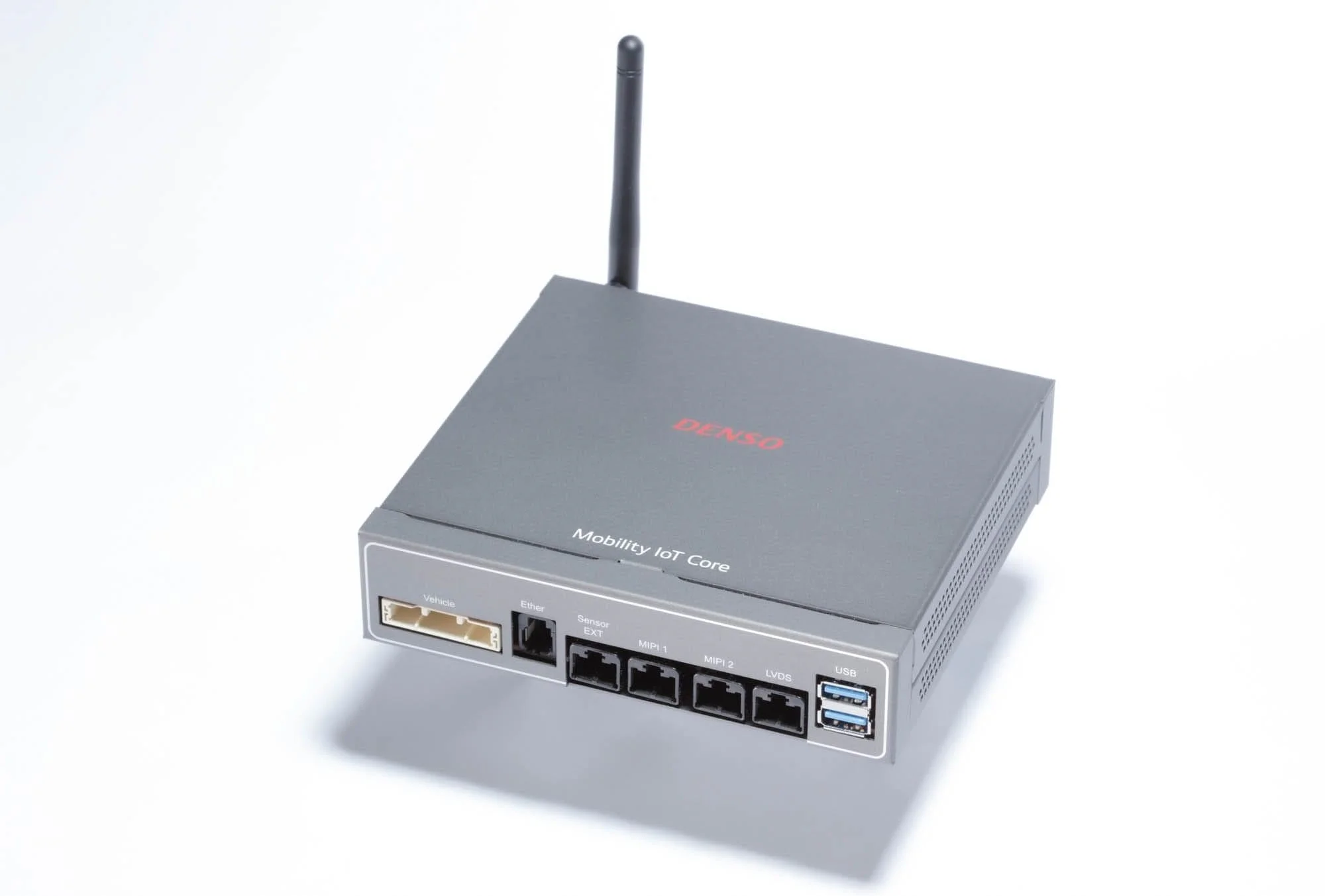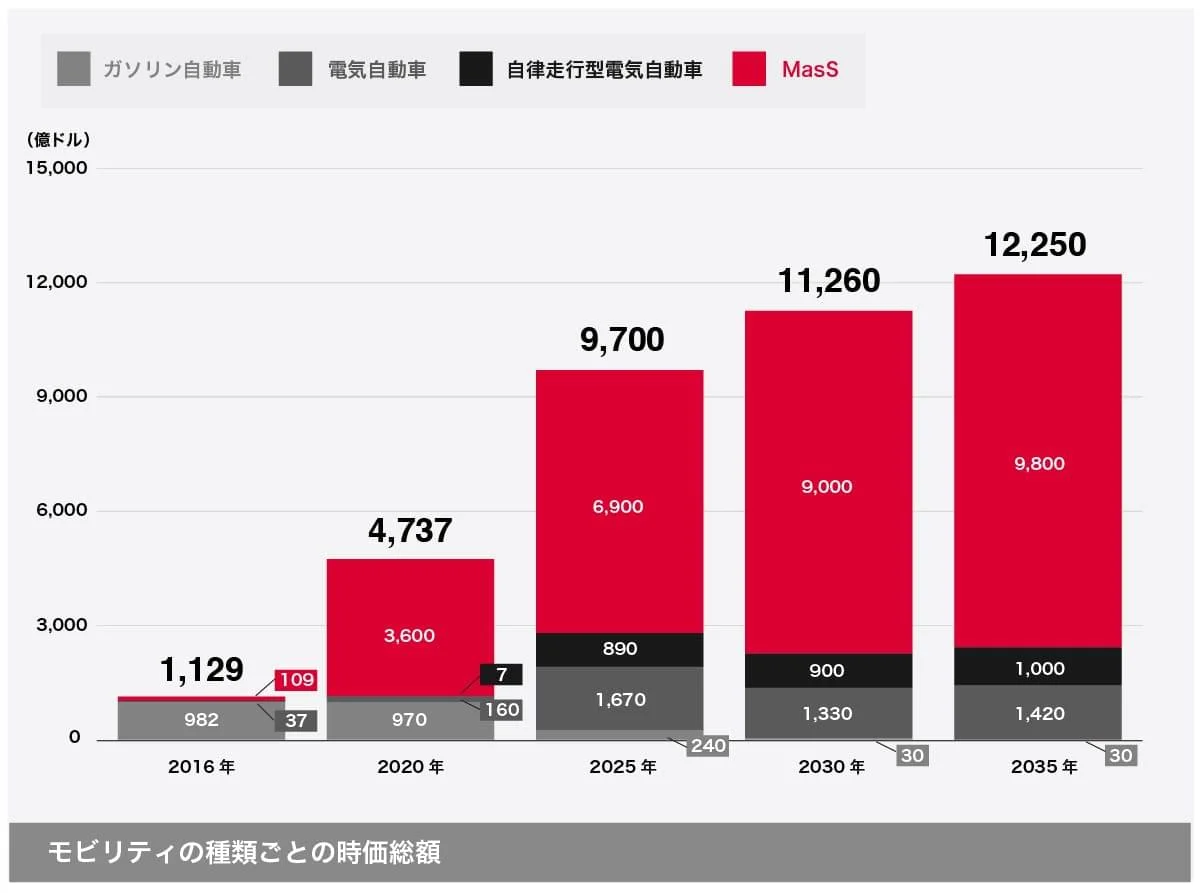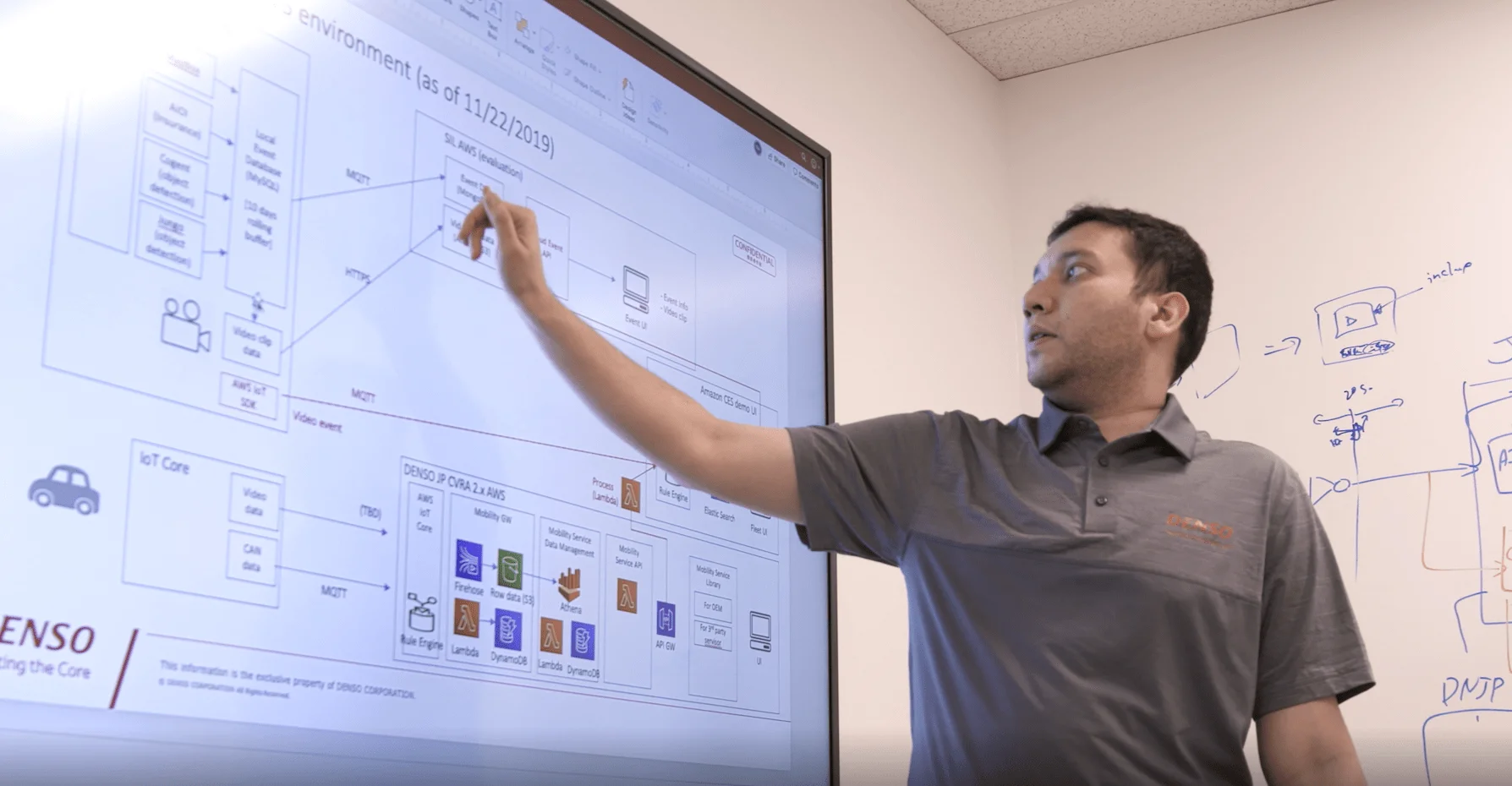

Jul 02, 2021
VISION & IDEAAiming for the World Standard in Edge Computing: Connecting Vehicles & Services through DENSO’s Mobility IoT Core Platform
Creating a new mobility ecosystem through data utilization
A transition is taking place that will change the meaning of the vehicle, from a mobility product to one that offers new services and value through cloud-networking connections. In response to this paradigm shift, fierce development-related competition is unfolding around the world as companies strive for dominance in future markets.
DENSO has developed “Mobility IoT Core,” a new onboard edge computing platform for automobiles that connects vehicles to cloud networks in order to offer new services. Countless new and innovative technologies have been announced in the field of CASE (connected, autonomous, shared and electric) vehicles, and many people are watching to see what kind of impacts Mobility IoT Core will have on the auto industry as it goes through a once-in-a-century transformation.
We talked about this with Makiko Tauchi, who oversees development activities as manager of the Mobility IoT Systems R&D Dept.
-

The Mobility IoT Systems R&D Dept.Makiko Tauchi
Makiko Tauchi joined DENSO in 2005. She majored in artificial intelligence (AI) at university, and after coming to DENSO began working in planning and development for products related to vehicle cockpit systems, like navigation systems, instrumentation and communication modules. From 2016 she became involved in connected systems development and is now conducting R&D on Mobility IoT Core.
Contents of this article
Mobility IoT Core: Onboard Edge Computing to Connect Cars with Services
―― What is the Mobility IoT Core platform currently being developed at DENSO and what does it do?
Tauchi: It’s an onboard edge computing system that connects vehicle with services. It uses an edge platform to run various applications, send and receive car-related data and perform other such tasks. The Mobility IoT Core system is capable of transmitting data collected by the vehicle to a cloud network in real time, which in effect changes the car into a mobile information-gathering device.
For example, an onboard camera can view and collect information on traffic accidents, road construction and so forth to enable more accurate, visual-style dissemination of road and traffic information. This can be communicated to drivers through their car navigation systems, helping them to avoid issues like traffic congestion. As more cars are equipped with the Mobility IoT Core platform, ever-larger amounts of data can be collected, and information sent back to drivers will become more and more reliable.
Additionally, cars these days are equipped with a wide range of equipment and features, which include engines, power steering systems, transmissions, airbags, onboard cameras, following-distance control devices and so forth, so computers known as electronic control units (ECUs) are used to control these. Although traditional ECUs don’t allow for the installation of new features, adding Mobility IoT Core platforms to vehicles can enable ECU software additions and updates, further expanding functionality.

―― In other words, adding Mobility IoT Core will greatly boost the functionality, convenience and communication capabilities of the vehicle?
Tauchi: Exactly. Just as society moved from flip phones to smartphones, I believe cars will experience a similar evolution. Integrating Mobility IoT Core into vehicles will enable users to install any software they like and customize the features and functions of their car. Some possible examples include enabling automated driving on weekends only, or turning on in-vehicle monitoring features only while one’s children are still at a young age.
People can add functions and features to their car as necessary, just like with apps on a smartphone. That’s why the end goal of Mobility IoT Core is not to distribute the hardware alone—the completion and installation of hardware is only the start of a larger process. By popularizing Mobility IoT Core hardware, it becomes possible to develop and deliver more appealing software. That’s the key to what we’re doing in this field.
User needs are shifting away from hardware toward software and services, and people want to pick and choose the features and functions they desire from among widely available software rather than buying new hardware every time they need to make a change. The auto industry must adapt to this shift in consumer values, and Mobility IoT Core is a key way to make that happen.

DENSO’s Unique New Value for Software
―― When did you start R&D on Mobility IoT Core?
Tauchi: We started in 2016 when automakers around the world began saying they wanted to change from being manufacturing companies to mobility service providers. Breaking into the mobility services business requires the addition of communication features, new software, and other things not previously included in cars, and so DENSO began planning a platform, centered on Mobility IoT Core, to serve as the core of new business in this field.
Using the technical expertise and strengths fostered through the development of onboard automotive electronics as our foundation, we proceeded to expand our technologies into cloud networking software. In order to establish a successful new business model for mobility services, we worked on developing an onboard edge computing system.
It’s important that we try to include the Mobility IoT Core platform in as many cars as possible—not just new models, but existing ones as well. We hope to build a business model that provides stable revenues by focusing not on hardware sales alone, but on providing software and services as well.

―― What types of software do you plan to provide?
Tauchi: Well, one type we want to include is vehicle monitoring system software. In recent years, there have been countless reports of unfortunate incidents in which small children are left in hot cars and die from heat stroke. Various countries have taken steps to prevent this such as enacting laws requiring automakers to include detection systems for children left in vehicles.
On a different note, car sharing and rentals have become much more popular in recent years than outright purchases of automobiles. We think that a system for notifying users of forgotten items from car sharing and ride sharing could be useful.
These types of software-based services could be used either by the end user of the car or the company providing the service. In these ways and others, we feel it’s important to understand the latest needs and provide services that solve problems faced by society.
One example can be seen in the current Covid-19 crisis. People require protection against the disease when using mobility services—they want to check whether surfaces have been disinfected or not, whether anyone posing a Covid infection risk is nearby, and so forth. We think that Mobility IoT Core could be useful for such disease-prevention services. Providing services that make people feel more safe and secure is one of DENSO’s greatest strengths, and this strength could be useful for Covid-19 countermeasures.
―― It seems this will bring about various changes in DENSO’s corporate profit structure.
Tauchi: That’s right. Without doubt, DENSO is able to continue as a company based mainly on profits from automotive components developed thus far, but in order to survive and grow further in the auto industry in the future, software-based services must be integrated into business.
DENSO has long been building a system based on the three pillars of mechatronics, electronics and software, and although this journey into new and unexplored territory will be hard, I am certain that we will succeed in the Mobility IoT Core project by utilizing our strengths as a company.

What DENSO Needs from Its Partners to Lead the Global Market
―― Please tell me more about your development framework for Mobility IoT Core.
Tauchi: Roughly 60 engineers, including outside personnel, are working full time on development. In addition to Japanese locations, we have a base in the United States located in downtown Seattle right next to Amazon’s headquarters. From this location, we’re developing the latest technologies together with leading-edge IT companies, the University of Washington and other organizations and partners.
―― I have heard that you have worked together with Amazon Web Services (AWS) at the Consumer Electronics Show (CES), re:Invent and other such events. Why did you decide to partner with AWS?
Tauchi: AWS positions cloud-based services as a de facto standard. By forming a partnership between AWS, which has deep experience in cloud technologies, and DENSO, which has far-reaching automotive technology experience, we expected to leverage our respective strengths for mobility services.
DENSO formed this alliance with AWS to develop business in the mobility services field. AWS engineers work on development with us onsite, and also work with us in preparing prototype vehicles, carrying out test runs and evaluating service quality, among other activities. We aim to convince as many companies as possible to incorporate Mobility IoT Core into their mobility service development, and so we are trying to build a platform that is easy to develop for.
Additionally, we’re collaborating on development with semiconductor companies including Arm and NXP, as well as with Google and other IT firms. Our engineers find these opportunities to work with world-leading companies to be really rewarding, and for me personally it has been a great experience.

―― What types of engineers do you prefer to work with?
Tauchi: We look for people who have a good head for business while also being able to carry out software development, because without these strengths they cannot work effectively alongside top-level engineers from other countries. Engineers at AWS and similar global IT companies are incredibly strict when it comes to evaluating technologies, and unless one is able to logically and persuasively explain the practical feasibility and potential financial gains of a technology currently being researched and developed, those overseas engineers will not get on board with the project.
A strong interest in new technologies and a drive to improve oneself are also important. Understanding both embedded technology and cloud technology is necessary in the mobility software development field. Many people are intimidated by the thought of tackling both these fields of technology at once, but in our line of work engineers must be fearless and willing to go back and forth between the two, and must also have a strong desire to soak up any related knowledge and experience.
In general, we prefer our engineers to be experienced with Python, Java, JavaScript, C and C++ programming languages, which are used often in development today. If they’re also familiar with real-time operating systems, Linux, AWS, and Google Cloud Platform (GCP), that’s very helpful for us. Ultimately, however, the most important things are a good head for business and a willingness to grow and improve—technical experience and know-how can be learned later.
―― One last question: what is your main goal for the future?
Tauchi: Releasing onboard vehicle edge computing products ahead of our competitors can bring huge profits, so we want to complete our system as quickly as possible to ensure a leading position in the market. Personally, my goal is to make the DENSO Mobility IoT Core onboard edge computing system the industry’s de facto standard, and to then cultivate a new business ecosystem together with a diverse array of other companies. By collaborating with these other organizations, we hope to develop and provide new services that make use of the Mobility IoT Core system, and share the profits while also facilitating growth for all parties involved.
We are currently in the midst of a once-in-a-century transformation in the auto industry—and a fierce development war is underway between industry players. Although calling this a life-or-death situation for the companies involved may be a slight exaggeration, it is undoubtedly a dynamic and exciting competitive environment. The world is going to keep changing, which is what makes this job so exciting.
I hope that other software engineers who want to be involved in the Mobility IoT Core project will step forward and join us. Together we can serve as a force for change in this thrilling era.
REACTION
Changing your "Can'ts" into "Cans"
Where Knowledge and People Gather.




Leave a comment